Yeti got its successor: 2017 Skoda Karoq. 4.38 meters long SUV, with an advanced infotainment system and also with four-wheel drive.
Skoda Karoq 2017 wants to climb higher than Yeti
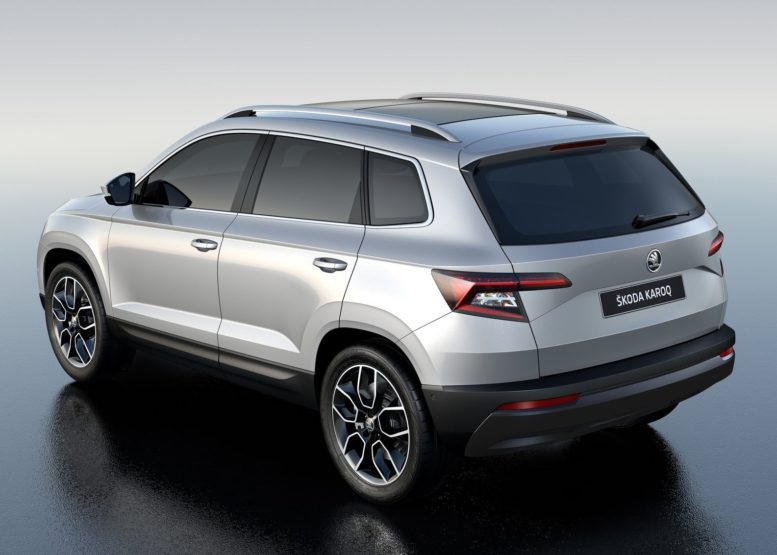
2017 Skoda Karoq is the new Yeti, uses Kodiaq tested recipe.
You still remember Skoda Yeti, right? Despite the practicality, interesting shape, terrain abilities, and decent driving qualities Yeti never climbed to the level reached by modern (smaller) SUV and crossovers. Like Nissan Qashqai, for example. It was a little too boxy, a little too different.
In their second attempt, Skoda does not want to take any risks. They have used a tried and tested recipe from its bigger brother Kodiaq. A recipe that obviously works, since Karoq appears to be very similar to Kodiaq.
That’s why the new Skoda Karoq is a classic crossover and therefore has a completely new name.
Skoda Karoq four-wheel drive is a big plus
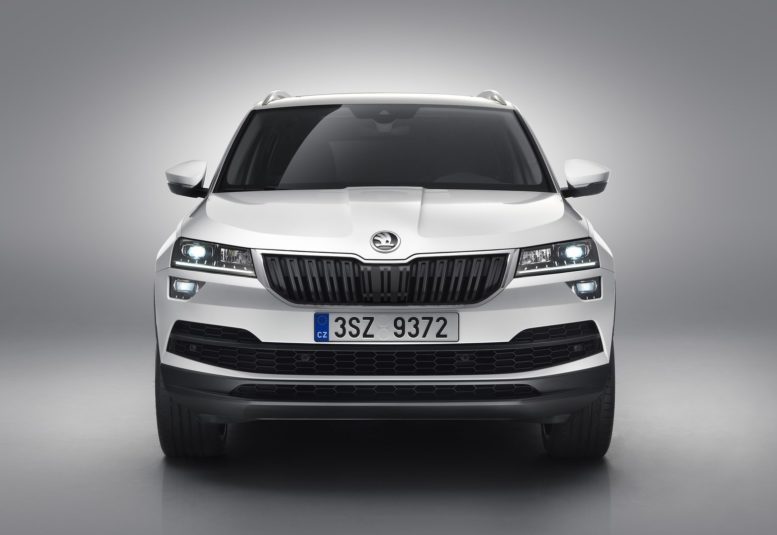
2017 Skoda Karoq offers four-wheel drive.
Another Kodiaq and Karoq common feature are they are both available with a four-wheel drive. The feature that is not so self-evident in today’s modern crossovers. Clearly, most buyers do not even ask for it. But since it is offered by some competitive brands this can also be an excellent marketing tool.
Petrol and Diesel engines for Skoda Karoq, the new 1.5-liter TSI might be the best option
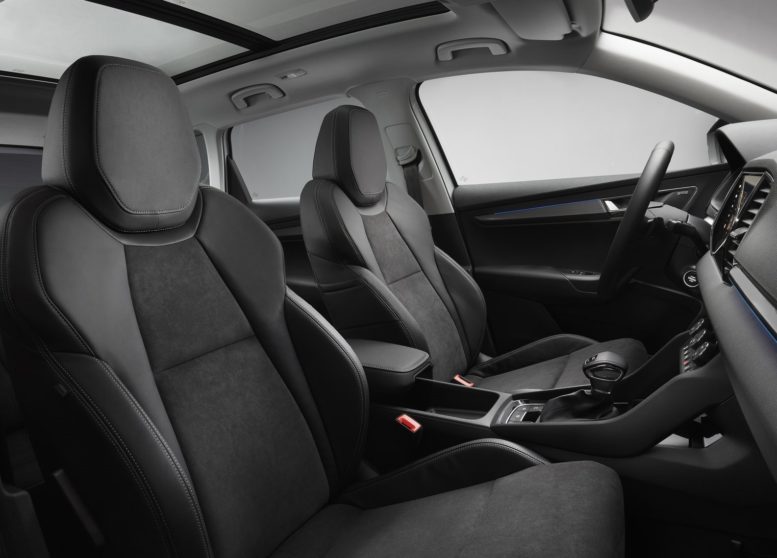
2017 Skoda Karoq offers two petrol and three diesel engine options.
The 4.38-meter-long Skoda Karoq, which is by the way noticeably larger than Yeti (wheelbase is longer for 7 centimeters), will be available with two petrol engines (1.0 and 1.5-liters) and three diesel version with 1.6-liter or 2-liter of engine displacement (more details at the end of the article). The maximum power ranges from 115 HP to 190 HP.
All engine options are available with dual clutch automatic transmission and, as already noted, the most powerful diesel option also with four-wheel drive.
The new 1.5-liter TSI also has the option of turning off the cylinders when not all the power is needed, in order to achieve lower fuel consumption.
Appropriately digitized, smartphone friendly
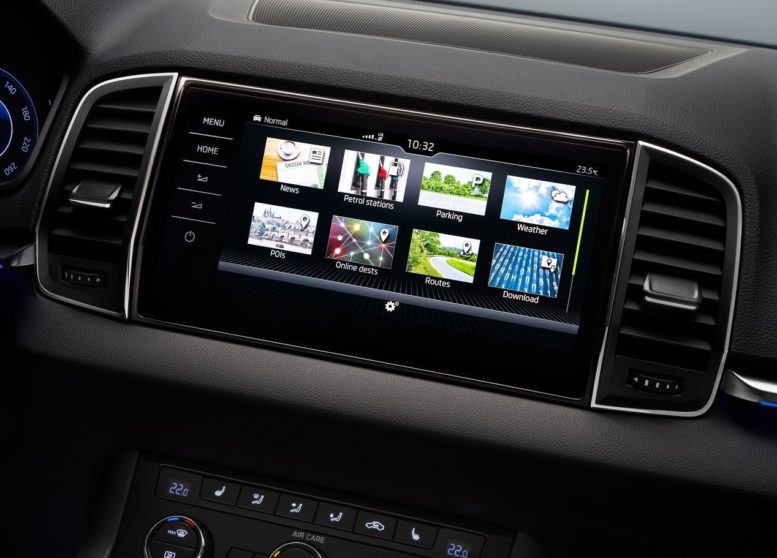
2017 Skoda Karoq with SmartLink System, supports Apple CarPlay and Android Auto.
A special effort has been made to digitize the car. All infotainment systems are perfectly compatible with smartphones. The Apple CarPlay and Android Auto, which are part of the SmartLink+ system, are available for an extra charge only with the most basic equipment, in all others come as standard.
2017 Skoda Karoq can be used as an access point for wireless internet, can access the web itself, and it is also possible to view the status of the car and monitor some of the features through the mobile application.
Goodbye Xenon, hello LED
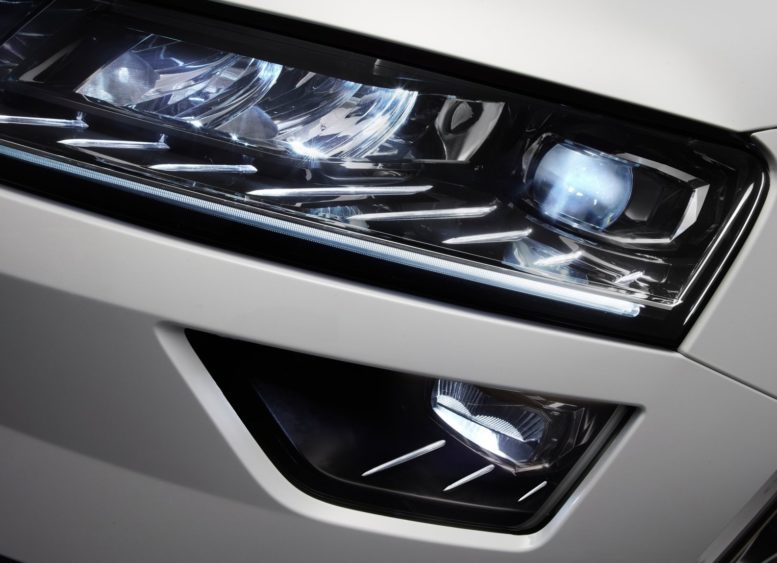
2017 Skoda Karoq full-LED head lights. No more xenon.
Skoda Karoq is saying goodbye from xenon headlights, as LED technology is available for an extra charge (or as part of higher equipment packages), in addition to halogen lights. The rear lights are always in the LED technology.
Skoda Karoq has digital dashboard and can almost drive by itself
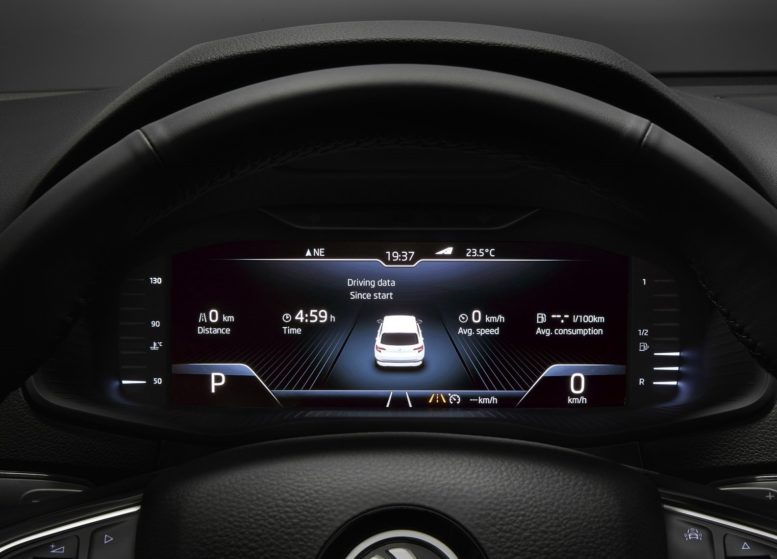
The digital dashboard in Skoda Karoq 2017.
New Skoda Karoq boasts a wide range of safety equipment, from automatic parking to assistance for driving in congestion. In real life conditions, this means that Karoq can virtually drive by itself in traffic jams. It will also be available with fully digital and customizable dashboard (similar as in Golf 7.5).
Big luggage compartment, decent towing capacity
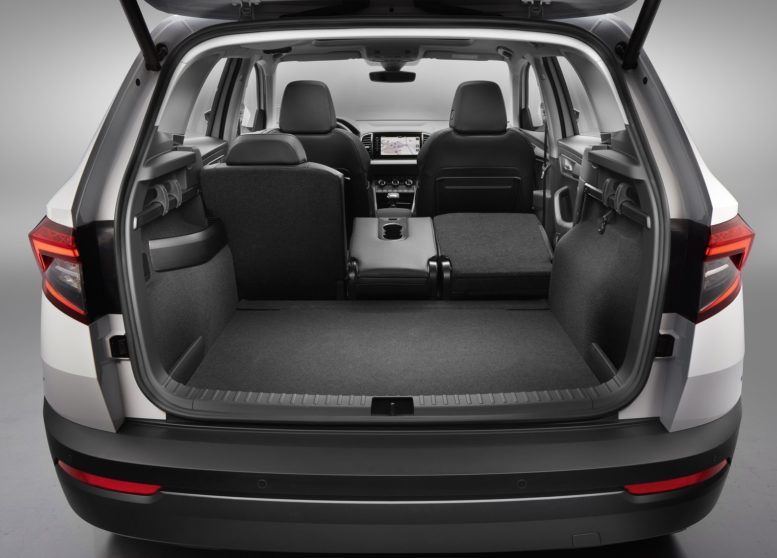
2017 Skoda Karoq luggage compartment: 521 liters when all seats in place, up to 1,810 liters with rear seats removed.
On the rear bench are three separate and longitudinally movable seats, Skoda calls them VarioFlex. The luggage compartment measures at least 521 liters (with VarioFlex from 479 to 588 liters). When rear seats are folded, you can get 1,630 liters of cargo volume, and there is also an option of removing the rear seats. Then you get 1,810 liters.
With Skoda Karoq two-tonne towing capacity and already known trailer assist, it is clear that on paper Skoda has prepared a great package of automotive technology, wrapped in a medium-sized crossover dress.
2017 Skoda Karoq technical details
Dimensions
Length: 4,382 mm
Width: 1,841 mm
Height: 1,605 mm
Wheelbase: 2,638 mm (2,630 mm in all-wheel drive vrersion)Petrol engines
Karoq 1.0 TSI
- power: 85 kW (115 HP)
- torque: 175 Nm
- maximum speed: 187 km/h
- acceleration from 0 to 100 km/h: 10.6 s
- combined average consumption: 5.2 l / 100 km
- average CO2 emissions: 117 g / km
Karoq 1.5 TSI
- power: 110 kW (150 HP)
- torque: 250 Nm
- maximum speed: 204 km/h
- acceleration from 0 to 100 km/h: 8.4 s
- combined average consumption: 5.1 l / 100 km
- average CO2 emissions: 119 g / km
Diesel engines
Karoq 1.6 TDI
- power: 85 kW (115 HP)
- torque: 250 Nm
- maximum speed: 188 km/h
- acceleration from 0 to 100 km/h: 10.7 s
- combined average consumption: 4.5 l / 100 km
- average CO2 emissions: 118 g / km
Karoq 2.0 TDI 150
- power: 110 kW (150 HP)
- torque: 340 Nm
- maximum speed: 207 km/h
- acceleration from 0 to 100 km/h: 8.9 s
- combined average consumption: 4.4 l / 100 km
- average CO2 emissions: 115 g / km
Karoq 2.0 TDI 190
- power: 140 kW (190 HP)
- torque: 400 Nm
- maximum speed: 211 km/h
- acceleration from 0 to 100 km/h: 7.8 s
- combined average consumption: 5.3 l / 100 km
- average CO2 emissions: 138 g / km
2017 Skoda Karoq competition and rivals
- Nissan Qashqai
- Seat Ateca
- Honda HR-V
- Opel Mokka X
- Mazda CX-3
- Jeep Compass
- Peugeot 3008
- Renault Kadjar
- Suzuki SX4 Cross
Image credit: Skoda
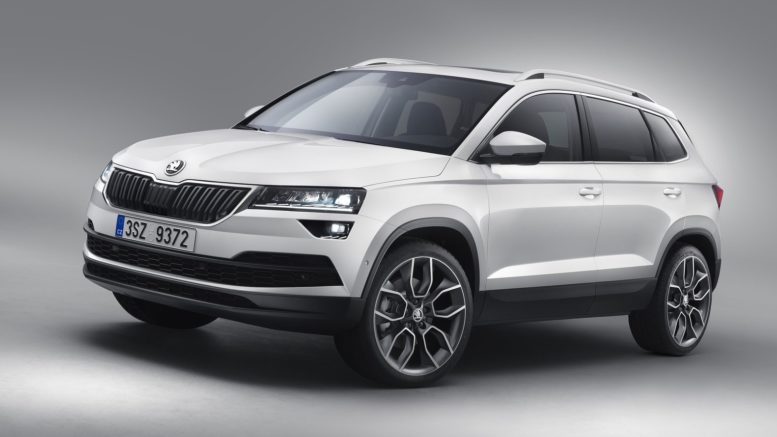

have the new karoq a cd player